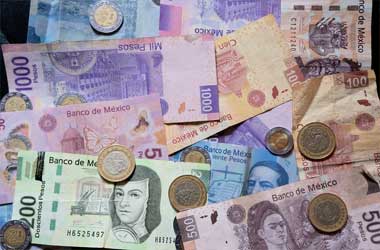 Disappointing Chinese Retail Sales Impact AUD Performance
Disappointing Chinese Retail Sales Impact AUD Performance
The Australian Dollar emerged as the weakest-performing currency among the G10 group, primarily due to fresh indicators of a decelerating Chinese economy and tepid investor response to newly announced measures aimed at reviving China’s housing market. The Pound to Australian Dollar exchange rate rose by a third of a percent to 1.9019 after China reported April retail sales growth of 2.3% year-on-year. This figure not only fell short of March’s 3.1% growth but also missed the consensus expectation of 3.8%.
Analysts at TD Securities noted that the underwhelming retail sales data signaled growing concerns over the health of the Chinese economy, highlighting a clear decline in consumer confidence. This development negatively impacted the Australian Dollar, which declined against all other G10 currencies, with the AUD to USD exchange rate dropping by a third of a percent to 0.6652.
China’s Measures to Stimulate Housing Market
The release of the disappointing retail sales coincided with China unveiling a series of initiatives aimed at revitalizing its stagnant property market—a critical driver of demand for Australian raw material exports. The People’s Bank of China announced the removal of the nationwide minimum mortgage interest rate and reduced the minimum down-payment ratio to 15% for first-time homebuyers and 25% for second-time buyers, down from the previous ratios of 20% and 30%, respectively.
Additionally, the Chinese government encouraged local authorities to purchase homes at “reasonable” prices to convert them into affordable housing, as reported by the state-run Xinhua News Agency, citing Vice Premier He Lifeng. Earlier in the week, speculation about these measures had led to a brief rally in the Australian Dollar. However, the final announcement seemed to have fallen short of market expectations, as reflected in the currency’s subsequent decline.
New Housing Market Initiatives
China’s new housing market ‘destocking’ program includes a provision for banks to access a CNY300 billion facility for loans at an annual rate of 1.75%, which can be rolled over four times. This initiative expands on an earlier trial conducted in early 2023 across eight cities, where banks were allowed to draw from a CNY100 billion fund provided by the People’s Bank of China to purchase unsold housing stock.
TD Securities expressed skepticism regarding the potential success of this new re-lending facility, pointing out the limited uptake during the trial phase, with only CNY2 billion of loans utilized by the first quarter of 2024. Furthermore, the overall size of the facility, capped at CNY300 billion, was perceived as underwhelming by investors, especially when compared to the higher estimates that exceeded CNY1 trillion.
Implications for the Australian Dollar
The Australian Dollar’s decline reflects broader concerns about the effectiveness of China’s measures to stimulate its economy and housing market. The tepid response to the new initiatives underscores persistent uncertainties and investor apprehensions about the future trajectory of China’s economic growth. Given China’s role as Australia’s most significant trading partner, any slowdown in the Chinese economy directly impacts the Australian Dollar, particularly through reduced demand for Australian exports.
This scenario underscores the intertwined nature of global economies and the sensitivity of national currencies to external economic policies and data. As the situation unfolds, the Australian Dollar may continue to experience volatility, influenced by further developments in China’s economic policies and their perceived effectiveness.
In conclusion, the recent performance of the Australian Dollar highlights the currency’s vulnerability to external economic conditions, particularly those stemming from China. The mixed reception to China’s new measures and the disappointing retail sales data have reinforced concerns about the sustainability of economic recovery efforts, casting a shadow over the near-term outlook for the AUD. As financial markets continue to react to these developments, the Australian Dollar’s performance will likely remain closely tied to the evolving economic landscape in China.




